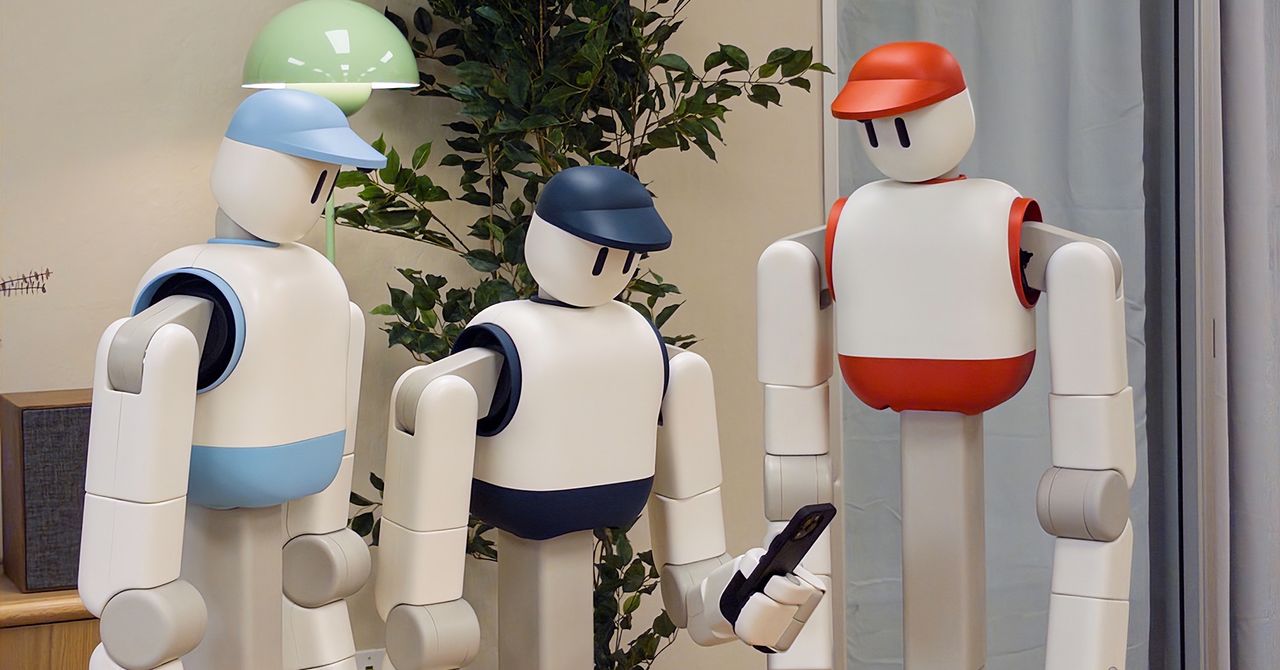Tech
Cracking a long-standing weakness in a classic algorithm for programming reconfigurable chips

Researchers from EPFL, AMD, and the University of Novi Sad have uncovered a long-standing inefficiency in the algorithm that programs millions of reconfigurable chips used worldwide, a discovery that could reshape how future generations of these are designed and programmed.
Many industries, including telecoms, automotive, aerospace and particle physics rely on a special breed of chip called the Field-Programmable Gate Array (FPGA). Unlike traditional chips, FPGAs can be reconfigured almost endlessly, making them invaluable in fast-moving fields where designing a custom chip would take years and cost a fortune. But this flexibility comes with a catch: FPGA efficiency depends heavily on the software used to program them.
Since the late 1990s, an algorithm known as PathFinder has been the backbone of FPGA routing. Its job: connecting thousands of tiny circuit components without creating overlaps.
For decades, it worked so well that it became the standard. However, as circuits grew larger, engineers began encountering frustrating slowdowns and occasional outright failures. Designs that should have worked were often labeled “unroutable.”
Now, with colleagues from the University of Novi Sad and the technology company AMD, researchers from the Parallel Systems Architecture Laboratory (PARSA) in the School of Computer and Communication Sciences have come one step closer to untangling the inner workings of this classic algorithm.
In their paper, which received the Best Paper Award at the 33rd IEEE International Symposium on Field-Programmable Custom Computing Machines, they revealed why these failures happen and how PathFinder’s limits can be overcome.
Cracks in the algorithm
“In fact, it’s not surprising that PathFinder sometimes fails,” explained Shashwat Shrivastava, Ph.D. student with PARSA and first author of the paper.
“Very early on, researchers showed that the problem behind FPGA routing is extremely hard. Later, the creators of the original algorithm, together with a few collaborators, found cases where PathFinder would never succeed—but they noted such cases wouldn’t appear in practice.”
For decades, it seemed they were correct—PathFinder worked surprisingly well.
“PathFinder worked so well, in fact, that when it failed, people rarely questioned the algorithm. Instead of venturing inside to see what was going on, they tweaked its parameters, modified circuits, or switched to larger FPGAs,” added Stefan Nikolić, an EPFL alumnus and now a professor at the University of Novi Sad.
“Part of the reason for this is that it is rather difficult to understand what PathFinder is actually doing on examples of practical importance. Modern circuits are so large that their signals form veritable on-chip jungles.”
Enter the forest
“So, we really needed to look at the individual trees in that jungle,” continued Shrivastava, “and I really mean trees. Each signal—a connection that carries information between circuit components—must reach multiple destinations without overlapping other signals. FPGA routing is essentially about building one tree for each signal on the chip.”
While working on another project that relied on PathFinder, the team kept seeing results that defied intuition. At first, they blamed external factors, not the algorithm itself. Eventually, they realized they needed controlled examples: small, tricky cases where a solution definitely existed, and in which PathFinder should succeed.
“We needed real, practical examples, and lots of them, to understand what was really going on,” Shrivastava explains. “So, we built a framework to automatically extract small, hard problems from real circuits. Watching how PathFinder struggled with these helped us uncover issues that had remained hidden for a very long time.”
Power in partnership
“This breakthrough would have been much harder without industry support,” said Mirjana Stojilović, Shrivastava’s Ph.D. advisor. “From the start, we collaborated with Chirag Ravishankar and Dinesh Gaitonde from AMD. They helped us model FPGAs as close as possible to commercial devices, ensuring our findings had real-world impact.”
Once the framework was ready, things moved quickly. The team found that PathFinder often built routing trees larger than necessary, increasing the risk of overlaps. The problem came from the order in which it created and added new branches to the trees.
“In retrospect, this is intuitive, but somehow it went largely unnoticed for many years,” Shrivastava said. “Our first solution was simple: try different orders and pick the one that results in the smallest tree. Experimentally, it worked surprisingly well.”
The team is now exploring more scalable solutions. “I am especially proud that Summer@EPFL interns have been contributing significantly. One of them, Sun Tanaka, is also a co-author of the paper,” added Stojilović.
“Our discovery could reshape how millions of FPGAs are programmed and influence the design of future generations of these reconfigurable chips.”
More information:
Shashwat Shrivastava et al, Guaranteed Yet Hard to Find: Uncovering FPGA Routing Convergence Paradox, 2025 IEEE 33rd Annual International Symposium on Field-Programmable Custom Computing Machines (FCCM) (2025). DOI: 10.1109/fccm62733.2025.00060
Citation:
Cracking a long-standing weakness in a classic algorithm for programming reconfigurable chips (2025, October 3)
retrieved 3 October 2025
from https://techxplore.com/news/2025-10-weakness-classic-algorithm-reconfigurable-chips.html
This document is subject to copyright. Apart from any fair dealing for the purpose of private study or research, no
part may be reproduced without the written permission. The content is provided for information purposes only.
Tech
NASA Finally Weighs In on the Origin of 3I/ATLAS

After the temporary shutdown of the US government, NASA has finally started its nonessential work back up. It’s starting off with a bang: The agency called a press conference to show its hitherto reserved images of the interstellar object 3I/ATLAS. NASA scientists also confirmed that 3I/ATLAS is in fact a comet, contrary to the speculations about alien technology flooding the internet.
During the broadcast, a panel of scientists showed the results of observations obtained by different NASA missions across various points in the journey 3I/ATLAS has taken. Each provided insights in the infrared, visible, ultraviolet, and gamma-ray spectrums, providing a better understanding of the true nature of 3I/ATLAS.
Among the most relevant data are images captured by the Mars Reconnaissance Orbiter and MAVEN satellites, as well as those from the Psyche and Lucy space probes, and even from the SOHO solar probe. The scientists clarified that all the data will be publicly available for anyone to investigate.
3I/ATLAS Images Shared by NASA
SOHO: Image From the Sun-Monitoring Probe
This orange-toned photo comes from NASA. The SOHO probe that monitors the sun managed to capture 3I/ATLAS between October 15 and 26. In the words of the agency, this image was a surprise. They did not expect that the object could be seen from so far away, 358 million km.
MRO: One of the Best Close-Ups of 3I/ATLAS
One of the most anticipated photos of the comet is the one obtained by the Mars Reconnaissance Orbiter satellite in October, when 3I/ATLAS approached at “only” 29 million km. NASA finally shared it. The image shows the frozen body surrounded by a cloud of characteristic dust ejected as the comet approached the sun.
STEREO: The Photo Confirming the Shape of 3I/ATLAS
The STEREO observatory analyzes the behavior of the sun. To get at least one coherent image of the comet, scientists had to stack several images taken at different exposures. In the end, the interstellar object was revealed as a bright orb against a noisy background.
MAVEN: A Glimpse of Comet Hydrogen
MAVEN is a Mars orbiter. Its lens captured this ultraviolet spectrum image of 3I/ATLAS before it reached its closest approach to the red planet. It shows hydrogen emitted from different sources. The portion on the left belongs to the comet’s signature.
PUNCH: Another Solar Glimpse
PUNCH is a polarimeter that monitors the sun’s corona and its heliosphere. However, its lenses made it possible to visualize the comet’s tail for weeks from October to September. In this animation, each frame represents a daily snapshot, while the streaks in the background are produced by the movement of the stars.
On December 19, 2025, the comet will reach its closest point to Earth. It will pass at a completely safe distance: about 267 million km away. To put that in perspective, it’s equivalent to almost 700 times the distance between the Earth and the moon, and 1.8 times the separation between our planet and the sun. This flyby will have no effect on the Earth.
Both NASA and other space agencies are expected to initiate additional observing campaigns to capture better photographs and relevant information about the third confirmed interstellar object in history.
This story originally appeared in WIRED en Español and has been translated from Spanish.
Tech
This Excellent LG OLED Is Deeply Discounted Before Black Friday

If you’re looking to make the move to an OLED screen, but don’t feel like stomaching the high price tag usually associated with the tech, you might consider the LG B5 OLED. It’s already a great screen at the full price, but Best Buy currently has it marked down to just $600. That’s a significant markdown for this TV, which can typically be found between $1,000 and $1,200.
The star of the show is LG’s OLED panel, the type typically found on TVs twice the price. If you’re curious why that’s so important, we have a great explainer that breaks down the difference between all the different panel types. The important takeaway here is that the pixels emit their own light, allowing individual spots of the screen to be perfectly black. The result is impressive, with incredible contrast between the brightest and darkest spots that’s best understood by seeing it in person.
The other areas of the screen are excellent as well. Our reviewer Ryan Waniata opined that “there’s a sumptuous touch to images of all sorts,” and liked the colors as well, which were accurate and sharp without any adjustment. The screen has a natural and vivid performance to it that feels all the more impressive when you consider the price point.
It has the chops for some gaming too, with feature support that meets or beats higher-end screens. With four proper HDMI 2.1 inputs, your consoles won’t need to fight for the good ports, which is a nice surprise for the price point. It can reach a refresh rate of up to 120Hz, which is just fine for most console gamers, and has both AMD FreeSync Premium and Nvidia G-Sync to make sure everything is smooth, plus Auto Low Latency Mode for quick response times.
Overall, the LG B5 OLED is a solid value at its full price, but the steep discount here makes this a really sweet upgrade or first OLED. If you’re still not sold, make sure to swing by our roundup of all the best TVs available, including the B5 and other OLEDs.
Tech
This Home Robot Clears Tables and Loads the Dishwasher All by Itself

Memo may not be the world’s fastest barista, but it is impressive—for a robot.
I recently watched as Memo, a new home robot from a company called Sunday Robotics, made coffee in an open-plan kitchen in Mountain View, California.
Memo looks like something out of Wall-E, with a gleaming white body, two arms, a friendly cartoonish face, and a red baseball cap. Rather than using legs as a fully humanoid robot would, Memo moves around using a wheeled platform and changes its height by sliding up and down a central column atop that platform.
The robot responded to a request for an espresso by rolling over to a countertop, and then using two pincerlike hands to slowly go through each step required to operate an espresso machine. It filled the porta filter with coffee grounds, tamped them down, slotted the porta filter into place and put a coffee cup below, pressed the buttons needed to start the machine, and finally retrieved the hot drink.
“We want to build robots that free people from laundry, from the dishes, from all chores,” Tony Zhao, cofounder and CEO of Sunday Robotics, told me as the robot brought the coffee over to the person who requested it.
Making a cup of espresso might not seem spectacular, but the feat is ridiculously hard for a robot to do in a real, messy kitchen. It requires the ability to identify different objects, figure out how to grasp them reliably, and use those objects properly. Sunday is not only building its own hardware but also training the models that allow its system to learn. “We think the way to make a home robot is to be full-stack, and to vertically integrate,” Zhao says. “And that’s a very ambitious thing to do.”
Courtesy of Sunday Robotics
-

 Tech4 days ago
Tech4 days agoNew carbon capture method uses water and pressure to remove CO₂ from emissions at half current costs
-

 Politics6 days ago
Politics6 days agoBritish-Pakistani honoured for transforming UK halal meat industry
-

 Sports4 days ago
Sports4 days agoTexas A&M officer scolds South Carolina wide receiver after touchdown; department speaks out
-

 Business5 days ago
Business5 days agoThese 9 Common Money Mistakes Are Eating Your Income
-

 Business5 days ago
Business5 days agoWhat’s behind Rachel Reeves’s hokey cokey on income tax rises?
-

 Fashion7 days ago
Fashion7 days agoAdidas & Patrick Mahomes expand NIL programme with Texas Tech athletes
-

 Tech6 days ago
Tech6 days ago$25 Off Exclusive Blue Apron Coupon for November 2025
-

 Sports5 days ago
Sports5 days agoApple scrapping MLS Season Pass service in ’26
















%25202.23.16%25E2%2580%25AFp.m..png)








